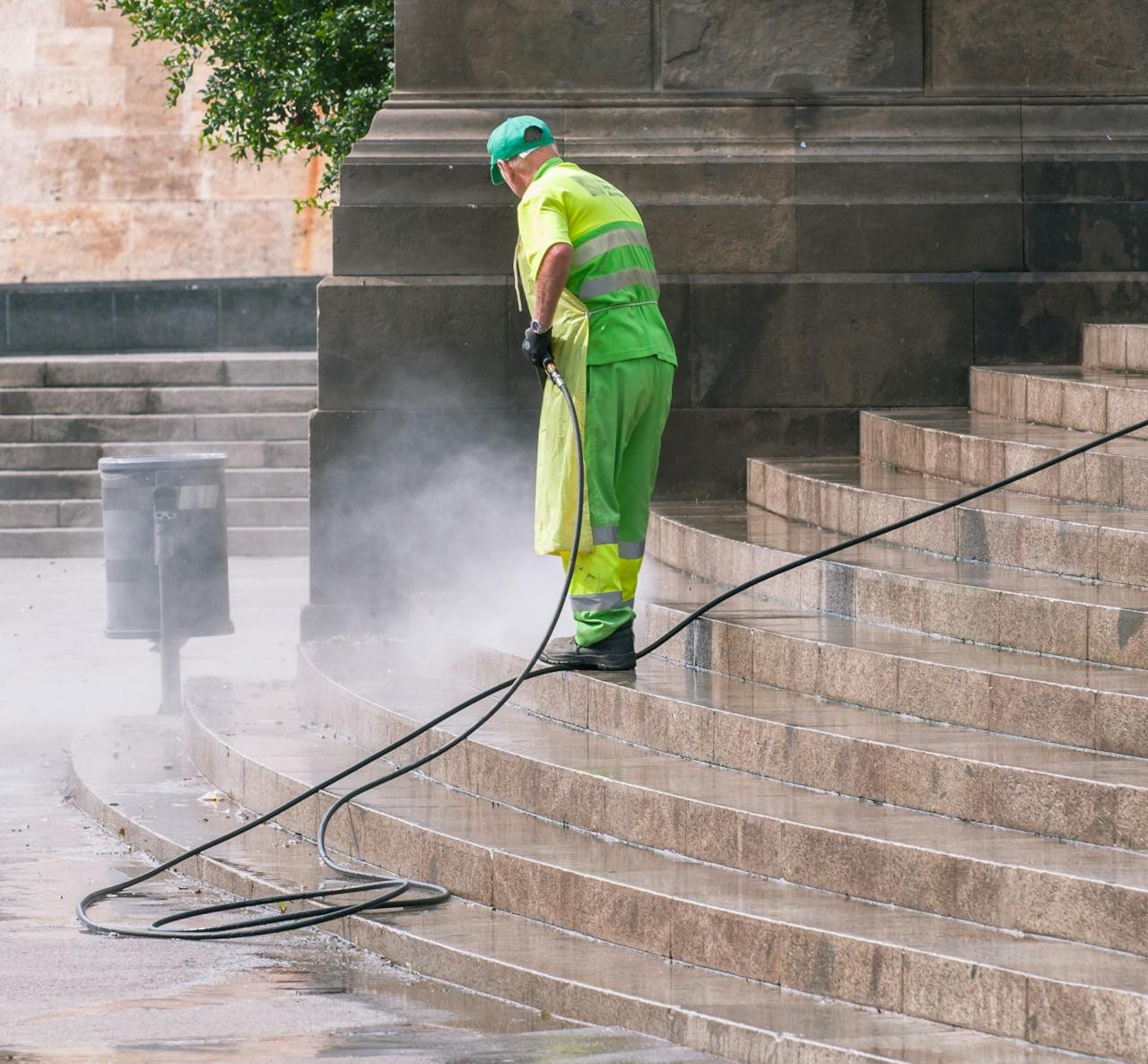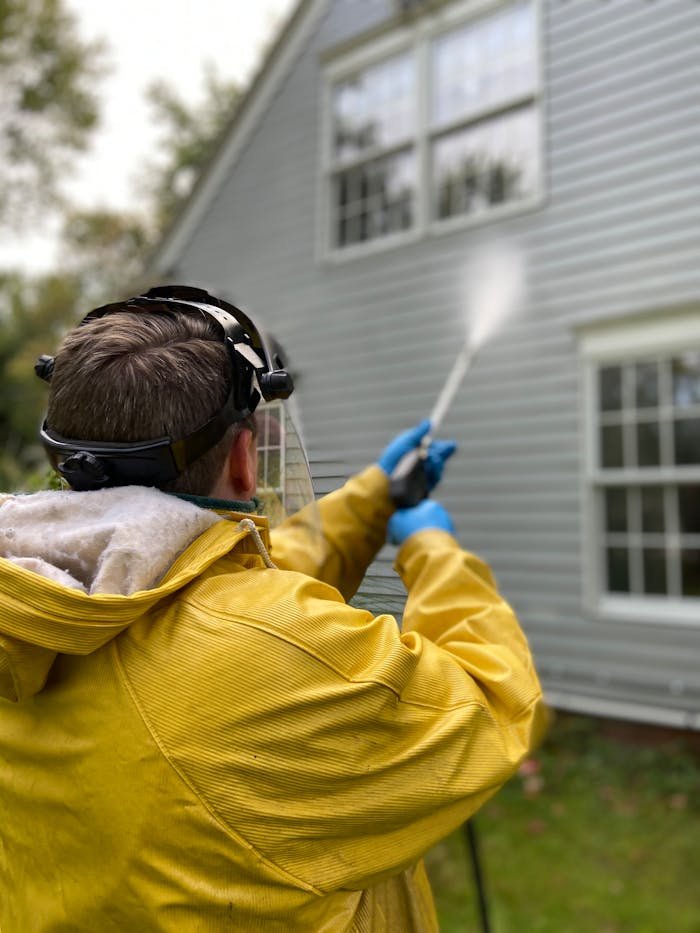If you live in Blount County, Alabama, you already know—life moves a little slower here, and that’s just the way we like it. Mornings on the porch with coffee, Sunday BBQs, and relaxing evenings out on the deck are what Southern living is all about. But let’s face it: if your deck’s lookin’ more gray than golden, you might not be enjoying it as much as you used to. That’s where professional deck washing comes in.
At first glance, it might seem like just a cosmetic issue. Dirt, mold, mildew, and algae can make your deck look weathered and worn. But the truth is, it goes deeper than that. Not only does buildup affect appearance, but it also shortens the life of your wood or composite decking. In Blount County, with our mix of humid summers and cool winters, decks take a beating year-round. That’s why regular deck washing isn’t just a good idea—it’s practically a necessity.
Let’s walk through what deck washing is, why it matters here in Blount County, what the process involves, and how you can get the most out of your outdoor space without spending a fortune.
Why Regular Refreshing Matters for Outdoor Spaces
Weather Doesn’t Take Days Off
Let’s be real—around here, the seasons don’t play. We get muggy summers, plenty of rain, the occasional winter freeze, and everything in between. Wood doesn’t stand a chance unless it’s looked after properly. Moisture seeps in, and before long, you’re dealing with discoloration, warping, or even the early signs of rot.
Getting ahead of it with the right touch-up helps preserve your investment and keeps things safe underfoot.
It’s Where Life Happens
Out back is more than just a few boards and nails—it’s where life happens. Birthday parties, holiday cookouts, and lazy summer nights all take place right there. But when the wood is slippery, stained, or faded, it’s harder to relax. Giving it a facelift makes everything feel fresh again—without shelling out thousands to replace it.
What Happens If You Wait Too Long?
You might think, “It doesn’t look that bad yet,” but here’s the truth: the longer you leave it, the harder it is to reverse. A little green here, some black streaks there—it all builds up fast in our damp climate. Before you know it, the surface becomes slippery, and the wear goes from surface-level to structural.
What starts out as something cosmetic can turn into a real headache if moisture seeps too deep or mold sets in. Avoid the pricey repairs later with a little upkeep now.
Doing It Yourself vs. Calling in the Pros
You’ve probably thought about handling it on your own—and hey, we get it. Local tool shops rent out sprayers and solutions. But this job isn’t as simple as grabbing a hose and going to town.
DIY: The Ups and Downs
Upsides:
Might save a few bucks short-term
Feels rewarding if you’re handy
Downsides:
Easy to damage surfaces with too much pressure
Can miss spots where mold hides
Time-consuming and messy
You need to know the right treatment for different surfaces
Hiring a Local Crew
Folks who do this every day know the right pressure settings, the proper wood-safe solutions, and how to treat your space without damaging plants or causing runoff issues. Plus, they usually finish faster and more thoroughly—leaving everything looking like new and safe to walk on, even barefoot.
What to Expect From a Professional Visit
Thinking about bringing someone in to handle the refresh? Here’s how the process typically goes:
1. Look Things Over
They’ll walk through your outdoor space with you, checking for soft spots, stains, or any hidden wear you might’ve missed.
2. Pre-Treatment
Before any deep work begins, a plant-safe and pet-friendly formula is applied to loosen years of buildup. This helps target mold, dirt, and organic growth without damaging the material.
3. Gentle Rinse
This isn’t about brute force. A moderate touch is used—just enough to lift away layers of grime while protecting the wood grain and fasteners underneath.
4. Optional Add-Ons
You might opt for a brightener to restore the wood’s natural color or a sealant to lock in that just-treated look and protect it from the elements for the long haul.
Common Outdoor Wood Setups in Our Area (And How to Handle Each)
Different homes feature different materials out back, and they each need a slightly different approach:
Pressure-Treated Lumber
Super popular around here due to its affordability and strength. Needs a good refresh about once a year and should be sealed every couple of seasons.
Cedar or Redwood
Naturally beautiful and rot-resistant, but these can fade quickly in harsh sun. A soft touch is best, plus a brightener to restore their color.
Composite Materials
Lower maintenance overall, but still prone to pollen buildup and mildew if left unchecked. A yearly rinse keeps it all looking sharp.
How Often Should You Schedule It?
Most folks around here find once a year works well—usually in the spring. That way, everything’s fresh and ready before the summer BBQs and family get-togethers start. If your backyard area is shaded or close to tree lines, you may want a second visit in the fall.
Signs It’s Time for a Refresh
Not sure if your backyard setup is overdue? Watch for these tell-tale signs:
Wood looks dull, gray, or uneven
Surfaces feel slippery after rain
There’s a greenish tint near shady areas
You smell mildew when it’s damp outside
The area just doesn’t feel inviting anymore
If one or more of those sound familiar, it’s time to take action.
How to Choose a Local Team You Can Trust
Finding the right folks for the job makes all the difference. Here’s what to look for:
Community Reputation
Choose someone who lives and works right here in town. Local folks have a reputation to protect—and that means better customer care, better pricing, and more reliable work.
Customer Reviews
Check online or ask around. Did they show up on time? Were they respectful of the property? Did everything look better after they left?
Safe Products and Gear
Make sure they use formulas that won’t harm plants or pets and that they understand how to treat wood without overdoing it.
What’s It Gonna Cost?
That depends on a few things:
How big the space is
What material it’s made of
How much wear and buildup there is
Whether you want extras like sealing or brightening
In general, basic touch-ups range from $150 to $300, while larger spaces or extra treatments can push it up to $500 or more. Still, that’s way cheaper than replacing the whole thing—and it adds value to your property.
Keep It Looking Good All Year Long
Want to make that like-new look last? Here are a few simple habits that go a long way:
Sweep away leaves and debris regularly
Trim nearby bushes and trees to cut down on shade and moisture
Use mats under furniture and grills
Re-seal every few years to protect against water and UV rays
Avoid harsh chemicals or salt-based de-icers in colder months
Final Thoughts: Make the Most of Your Backyard Again
Your outdoor gathering space should feel like a place you want to spend time—not something you avoid because it looks run-down or feels unsafe. Whether you’re sipping sweet tea after dinner or throwing a Saturday bash, that space deserves some love.
Bringing in a trusted local team for a deep refresh once a year keeps things safe, beautiful, and ready for whatever life brings your way. Don’t wait until it’s falling apart—bring it back to life now and enjoy every sunny afternoon and quiet evening to the fullest.


